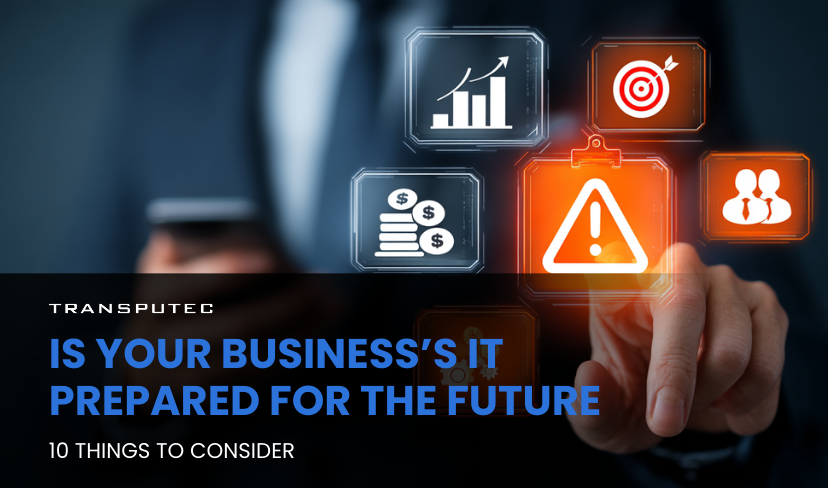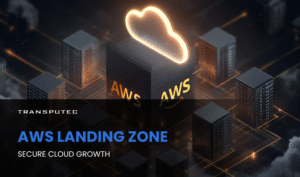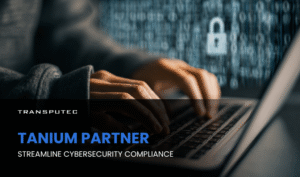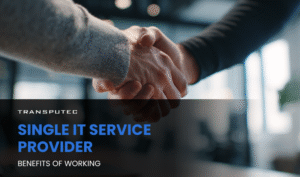Written by KRITIKA SINHA | MARKETING
It’s 2 a.m., and your system just crashed. Again.
Your team is scrambling to recover critical data, your customers can’t access services, and your reputation is hanging by a thread. It’s not a cyberattack—just outdated infrastructure and poor planning. Sound familiar?
Businesses today are running operations on decade-old systems, struggling to support hybrid work models, and reacting to cybersecurity threats after they happen. If your IT setup feels more like a patchwork of quick fixes than a robust strategy, it’s time to stop and ask: Is your business’s IT prepared for the future?
This blog explores ten essential factors every business must consider to ensure its IT infrastructure is future-proof. From cloud readiness and AI integration to data compliance and disaster recovery, we’ll share expert advice backed by real-world experience. If you want actionable insights, not buzzwords, keep reading.
Is Your Business’s IT Prepared for the Future? Understanding the Stakes?
The digital age has accelerated beyond expectations. According to a 2023 Gartner report, 70% of business leaders expect to invest more in IT transformation, yet 40% still rely on legacy systems that can’t scale or secure modern workflows. The risks? System downtimes, data breaches, productivity loss, and—worst of all—customer distrust.
Is your business’s IT prepared for the future to withstand technological disruptions, support remote teams, and stay compliant? If not, you’re not alone—but staying unprepared isn’t an option anymore.
10 Critical Considerations to Ensure Your IT Infrastructure
1. Cloud Strategy: Are You Scalable and Agile?
What it means:
A future-ready IT environment must be flexible and scalable, and this is nearly impossible to achieve without a solid cloud strategy. Cloud computing allows businesses to scale resources on demand, reduce hardware costs, and enable anywhere access to systems and data.
Why it matters:
With remote work, data growth, and customer expectations rising, traditional on-premise servers can’t keep up. Cloud platforms like Microsoft Azure, Amazon Web Services (AWS), and Google Cloud provide businesses with the agility to adapt, recover quickly from disruptions, and experiment with innovations without heavy upfront investment.
What you should do:
Evaluate your current infrastructure. Are you still storing data on physical servers? Are your apps cloud-compatible? Transputec helps clients with smooth cloud migrations and hybrid-cloud strategies tailored to specific needs.
2. Cybersecurity: Is Protection Proactive or Reactive?
What it means:
Cybersecurity isn’t just about installing antivirus software anymore. It’s about proactively identifying and mitigating threats before they cause damage. This includes real-time monitoring, zero-trust architecture, and employee training.
Why it matters:
A single ransomware attack can bring your operations to a halt. According to IBM’s 2023 report, the average cost of a data breach reached $4.45 million. The longer you take to detect a breach, the more it costs—both financially and reputationally.
What you should do:
Adopt a layered security approach. Invest in threat detection tools, use multi-factor authentication (MFA), and work with cybersecurity specialists (like Transputec’s SOC services) to constantly monitor and respond to threats.
3. Data Management: Are You Making Smart Use of Information?
What it means:
Collecting data is easy. Making it meaningful is not. Many businesses store data without leveraging it for insights. Future-ready IT enables data integration, cleansing, and analytics so leaders can make informed decisions.
Why it matters:
Poor data leads to poor decisions. Worse, unstructured or siloed data increases the risk of compliance violations and missed opportunities. According to Forrester, up to 73% of data goes unused for analytics in most companies.
What you should do:
Adopt a data governance strategy that ensures accuracy, security, and usability. Use data visualisation tools (like Power BI or Tableau) and centralise storage through cloud-based data lakes or warehouses.
4. Compliance and Governance: Are You Audit-Ready?
What it means:
Governments and industry bodies are tightening regulations around data privacy, cybersecurity, and digital operations. Your IT systems must enforce and document compliance 24/7.
Why it matters:
Non-compliance can lead to huge penalties. For example, GDPR violations can cost up to 4% of annual global turnover. Beyond fines, compliance also builds trust with clients and partners.
What you should do:
Implement policies for data access, retention, encryption, and audit trails. Automate compliance reports and conduct periodic assessments. Transputec offers compliance-readiness tools and advice across multiple frameworks, including GDPR, ISO 27001, and HIPAA.
5. Workforce Support: Can Your IT Handle a Hybrid Future?
What it means:
Today’s workforce expects flexibility. Your IT must enable secure, smooth access to company systems whether employees are at home, in the office, or on the move.
Why it matters:
Without the right tools, remote work leads to productivity dips, security risks, and frustrated employees. According to McKinsey, 58% of employees now prefer hybrid work. Businesses that can’t support this model risk losing top talent.
What you should do:
Deploy secure VPNs, virtual desktops (VDI), endpoint protection, and collaboration platforms like Microsoft Teams or Slack. Transputec also offers remote device management and 24/7 IT support for distributed teams.
Is Your Business’s IT Prepared for the Future?
Connect with us today for our free consultation!
6. Automation and AI Integration: Are You Innovating or Stagnating?
What it means:
Automation and artificial intelligence (AI) are not just buzzwords—they’re tools that save time, reduce errors, and enhance decision-making. From chatbots to predictive maintenance, these technologies are already transforming how businesses operate.
Why it matters:
Manual tasks consume resources and are prone to error. AI can automate repetitive workflows, analyse large data sets, and even predict customer behaviour. Businesses that embrace AI gain a a competitive advantage and speed.
What you should do:
Identify repetitive tasks in your organisation that can be automated, such as customer queries, scheduling, or reporting. Use platforms like Microsoft Power Automate, Zapier, or custom AI integrations, and consult experts like Transputec to assess ROI and feasibility.
7. Disaster Recovery: Do You Have a Business Continuity Plan?
What it means:
Disaster recovery is more than backing up files. It’s a complete plan that ensures your business can continue operating during and after a cyberattack, hardware failure, or natural disaster.
Why it matters:
According to the Uptime Institute, downtime can cost a business an average of $9,000 per minute. Having no plan in place increases the risk of data loss, revenue loss, and regulatory fines.
What you should do:
Develop a business continuity strategy that includes regular backups (cloud and off-site), clear recovery time objectives (RTO), and routine failover tests. Transputec offers DR-as-a-Service (DRaaS) for businesses that need help setting this up.
8. Legacy System Modernisation: Are You Stuck in the Past?
What it means:
Legacy systems are outdated applications or platforms that no longer meet current demands. They are harder to maintain, insecure, and incompatible with newer technologies.
Why it matters:
These systems slow down innovation, cost more in the long run, and increase security risks. According to a Capgemini report, 80% of businesses say legacy systems are hindering digital transformation.
What you should do:
Identify outdated software or hardware. Consider re-platforming, re-architecting, or replacing legacy systems with modern, cloud-based alternatives. Transputec helps businesses migrate without disrupting daily operations.
9. Vendor Relationships: Do You Have the Right Partners?
What it means:
Your IT ecosystem depends on various third-party vendors—cloud providers, hardware suppliers, software platforms, and managed service providers. Poorly managed vendor relationships can lead to inefficiencies, risks, and misaligned goals.
Why it matters:
Future-ready businesses rely on strategic partnerships, not just transactions. Having the right partners ensures consistent support, access to innovation, and aligned roadmaps.
What you should do:
Conduct regular vendor reviews. Measure SLAs, support quality, and innovation potential. If your current IT partner isn’t delivering value, it’s time to talk to companies like Transputec, which prioritise long-term strategic growth.
10. IT Budgeting: Are You Investing Strategically?
What it means:
Budgeting isn’t about spending more—it’s about spending smarter. IT investments must be tied to business objectives, scalability, and risk mitigation.
Why it matters:
Poor IT budgeting leads to overspending on tools you don’t need or underinvesting in critical areas. Gartner suggests companies that align IT budgets with strategic goals grow 30% faster than those that don’t.
What you should do:
Evaluate ROI on past IT projects. Involve IT leaders in financial planning. Build flexible budgets that can adapt to business changes and economic shifts. Transputec’s experts can help you forecast future needs and optimise spending.
Conclusion: Securing Your Competitive Edge
We’ve explored why “Is Your Business’s IT Prepared for the Future” is the defining question for modern organisations. From empirical data highlighting widespread gaps to actionable strategies for assessment, upgrades, cybersecurity, and more, it’s clear that future-proofing your IT is not just about technology—it’s about safeguarding your business’s success, resilience, and growth.
The most successful companies don’t wait for problems—they anticipate them, adapt, and innovate. Whether you’re a small business or a global enterprise, the steps outlined here will help you answer “Is Your Business’s IT Prepared for the Future” with a confident yes.
Ready to Future-Proof Your IT? Connect with Transputec
Don’t leave your business’s future to chance. Contact us today to connect with a Transputec expert and get started on your journey to a secure, agile, and future-ready IT environment.

Ready to experience the Transputec difference?
Contact us today to schedule a consultation with our experts.
FAQs
1. What makes Transputec qualified to prepare my business’s IT for the future?
Transputec has over 35 years of experience delivering IT solutions across sectors. Our team offers end-to-end support from consulting and cloud migration to cybersecurity and managed services. We don’t offer one-size-fits-all plans; we tailor strategies to your business goals.
2. How does Transputec approach IT modernisation?
We begin with a comprehensive IT audit, identifying gaps in infrastructure, security, and scalability. Then, we create a roadmap covering cloud integration, cybersecurity, and automation, ensuring your business’s IT is prepared for the future.
3. Can Transputec help with remote workforce support?
Yes, we provide solutions for secure remote access, virtual desktops, endpoint security, and collaboration tools. Our goal is to make hybrid work seamless and safe, no matter where your team is located.
4. What industries does Transputec serve?
We work with clients in finance, legal, healthcare, retail, logistics, and more. Each industry has unique IT requirements, and we bring domain expertise to create compliant, future-ready systems.
5. How do I know if my IT infrastructure is outdated?
Signs include frequent downtime, slow performance, software incompatibility, security vulnerabilities, and high maintenance costs. Transputec can conduct an assessment to determine how future-proof your setup is.






